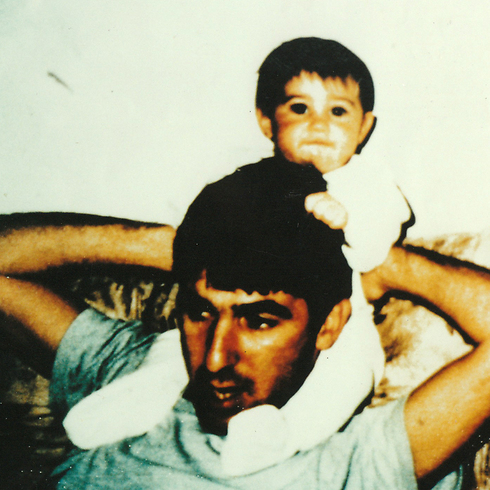Israel, Hezbollah and Iran in secret negotiations over Ron Arad
Ronen Bergman/Ynetnews/Published: 06.09.16
Another recent attempt to learn the fate of the IAF navigator who went missing in Lebanon nearly 30 years ago has failed; Iran’s Revolutionary Guards are motivated to find Arad in return for solving the mystery behind the disappearance of 4 Iranian diplomats it believes Israel is holding captive.
Another recent attempt to ascertain the fate of Israel Air Force navigator Ron Arad has failed, Western intelligence sources have revealed to Ynet’s sister publication Yedioth Ahronoth. Arad went missing almost 30 years ago after ejecting out of his plane over Lebanon.
Over the past year, Israel and Hezbollah held indirect talks mediated by a third-party Western intelligence agency. The Iranian Revolutionary Guard Corps (IRGC) was also involved in the negotiations.
The talks were part of a mutual effort, with both sides highly motivated to solve two missing cases that have over the years become loaded political issues that also carry weight abroad: The disappearance of four Iranian diplomats—one of them a member of one of the most prominent families in the Tehran regime—in Beirut in 1982, and that of the IAF navigator in October of 1986.
Hezbollah was reportedly optimistic about its chances of finding the remains of the missing navigator, who has long been presumed dead, after having gathered new information in recent months. However, the pro-Iranian Shiite Lebanese organization was unsuccessful in finding Arad’s place of burial.”They said the ground in the area where Arad was buried has moved and changed since,” a Western intelligence official explained. “They’re continuing to try and are confident they’ll eventually manage to locate the grave.”According to that official, the Iranians were intimately involved in the talks both because it was the IRGC that had Arad from 1988 until his death and because the IRGC is under pressure from the senior clerics of the regime in Tehran to solve the missing persons case of four Iranian diplomats. Iran has accused Israel of the kidnapping, claiming that the four are still alive and being held by the Jewish state. In 2005, the Israeli intelligence community was able to obtain information considered to be “of the highest levels of certainty” that the captured navigator Arad had died in Lebanon, likely from an illness, between 1995 and 1997.
The chief IDF rabbi at the time had agreed to declare Arad a “fallen soldier whose place of burial is unknown,” but then-Prime Minister Ariel Sharon rejected that course of action. Sharon was wary of the Arad family’s reaction. The Arads disagreed with that designation and demanded that, until his body was returned to Israel, the navigator be considered alive and MIA.
Ron Arad in a photo taken during his captivity
Over the past 12 years, several attempts have been made to resolve both of these missing cases, with the two cases being closely intertwined. In 2004, Israel—with the help of German mediation—provided Hezbollah with information it gathered which detailed the way the four Iranian diplomats were kidnapped, tortured and murdered by the Christian Lebanese Phalanges Party. Israel provided Hezbollah with a transcript of a testimony by Robert Hatem, a senior leader in the Phalanges, who told the Mossad how he tortured the diplomats with electric shocks, shot them and then threw their bodies into a pit of lime. Hatem told me the same in 2006. But this information did not satisfy the Hezbollah leadership or the heads of the IRGC, some of whom are still convinced this was merely an Israeli attempt to spread disinformation. During 2005 and early 2006, Hezbollah made several attempts (which appeared genuine to the German mediators) to find Arad’s place of burial. The terrorist group worked with representatives of the IRGC and Lebanese intelligence to investigate the case and provide Israel with a report detailing what had befallen Arad during the years devoid of signs of life from him. Hezbollah representatives went to Tehran while Iranian representatives travelled to Lebanon to investigate the matter.
Ron Arad in his youth
Hezbollah and the IRGC encountered many difficulties in their investigation. Since Arad’s presence in Iran was kept secret from all but a handful of people, the report of his death was likely never put into writing, and no tombstone was erected at his grave.Among those who travelled to Lebanon to investigate were some IRGC members who served in Beirut in the 1990s. They came to identify the spot where they could more or less remember having buried Arad. But the passage of time and topographical changes led to them only identify the general area, rather than the exact spot. Following their investigation, Hezbollah conducted digs in different areas of Lebanon, uncovering bones that have been transferred to Israel on several occasions. The Hezbollah representatives specifically stated they did not know whether the bones were indeed Arad’s, and that they were sending the bones for Israel to examine them. A sample taken from the bones was compared to Ron Arad’s DNA profile, which was created in 1996 at the Abu Kabir Forensic Institute by cross-referencing blood samples from Arad’s mother Batya and brother Chen. The samples were checked four times over to leave no doubt, and each time were found to not be a match.
Ron Arad with his daughter Yuval


